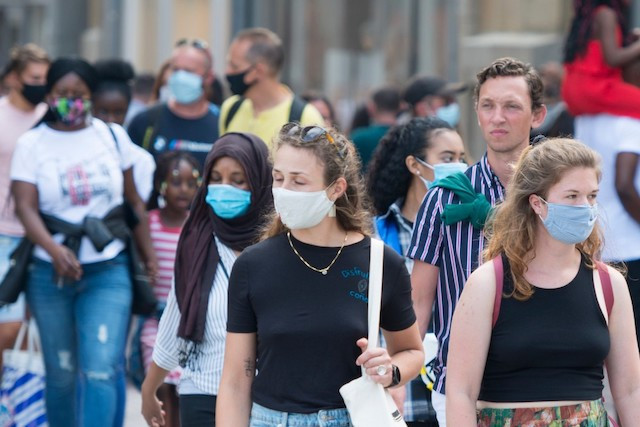Until Monday, 19 October, the number of covid-19 cases was increasing in a linear fashion, with figures fluctuating between 100 and 250 cases during the prior 10 days. But on Tuesday, 20 October, the numbers rose substantially, with 483 cases recorded. One day later, almost 600 cases. Two days later, on Friday October 23, 862 cases were detected.
How can this leap be explained? According to an article in the online media science.lu, this phenomenon might be explained by the percolation--or threshold--effect. Beyond a certain "viral mass" (i.e., the number of people carrying the virus) in the population, the number of new infections can suddenly increase for no apparent reason.
The concept, used in epidemiology, stems from physics. An example to better understand this is to think abouta bag filled with wooden balls, in which iron balls are gradually added. If the number of the latter is too low, the bag cannot conduct electricity, as wood is not a conductor. But, after a certain threshold, there will be enough iron balls to touch each other, form a chain and, in turn, conduct electricity.
Beyond clusters
However, this threshold is reached when adding a last ball which causes a sudden change: the bag, at first non-conductive, becomes conductive. However, when this effect occurs depends largely on chance: the chain can form with a greater or lesser number of iron balls. And it is currently impossible to predict when this threshold will be reached.
The principle is the same with the covid-19 epidemic. To a large extent, people have contact with other people within "clusters", groups such as family, close friends, colleagues, sports partners. There is therefore a much greater probability that an infected person will infect another person belonging to one of these clusters, rather than another person in Luxembourg.
But from a certain number of infected people in the country, the probability of transmission will increase so much that the virus will be able to be transmitted from one cluster to another, even without a direct link between them, via detours and, hence, an explosion in the number of cases. Which, according to science.lu, would have arrived in Luxembourg from 20 October.
Unpredictability
One of the consequences is that the method of testing, tracing and isolating--the one used in Luxembourg until now--then becomes less effective, and the pandemic more difficult to control.
On the other hand, as the virus is ubiquitous and is transmitted from cluster to cluster, infections--which were until then rather limited to the younger generations--are now infecting older people. The method of leaving young people free and specifically protecting the elderly then becomes inoperative, notes science.lu.
To avoid this runaway phenomenon, of course, everything must be done to stay below this threshold. But this goal is extremely difficult to achieve, and one of the obstacles is that the moment when this tipping point is reached is unpredictable--in part, as science.lu notes, because chance plays a role, but also because cluster size and mix, as well as individual behaviours, are critical factors which vary per culture, country, etc.
In the absence of the ability to keep the number of cases below this threshold, the solution remains to limit social contact. A curfew, like the one implemented in Luxembourg, is a first option. And if that is not enough, confinement, already in place in France or Belgium, remains a last-resort solution.
This article was originally published in French on Paperjam.lu and has been translated and edited for Delano.
